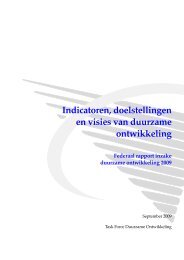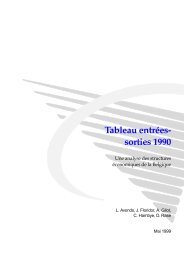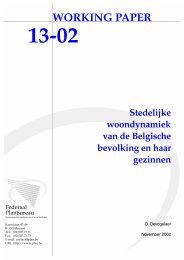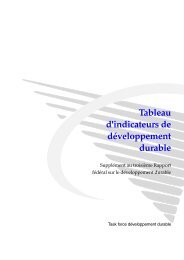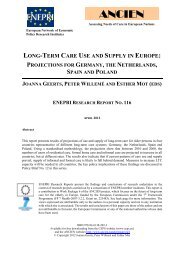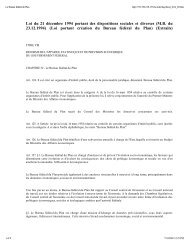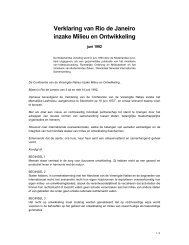LIAM 2 User Guide
LIAM 2 User Guide
LIAM 2 User Guide
You also want an ePaper? Increase the reach of your titles
YUMPU automatically turns print PDFs into web optimized ePapers that Google loves.
<strong>LIAM</strong> 2 <strong>User</strong> <strong>Guide</strong>, Release 0.7.0align(score, ’my_csv_file.csv’)– made align() (and by extension logit_regr) always return False for individuals outside the filter, insteadof trying to modify the target variable only where the filter is True. That feature seemed like a goodidea on paper but had a very confusing side-effect: the result was different when it was stored in anexisting variable than in a new temporary variable.– it is no longer possible to use expressions in alignment files. If you need to align on an expression(instead of a simple variable), you should specify the expression in the alignment function. eg:align(0.0, fname=’al_p_dead.csv’, expressions=[gender, age + 1])• the result of a groupby can be used in expressions. This can be used, for example, to compute alignmenttargets on the fly.• implemented explore on data files (.h5), so that one can, for example, explore the input dataset.• added skip_na (defaults to True) argument to all aggregate functions to specify whether or not missingvalues (nan for float expressions, -1 for integer expressions) should be ignored.• macros can now be used in the interactive console.• added “globals” command in the interactive console to list the available globals.• added qshow() command to show an expression “textual form” in addition to its value. Example:qshow(grpavg(age))will display:grpavg(age): 38.5277057298• added optional “pvalues” argument to groupby() to manually provide the “axis” values to compute theexpression on, instead of having groupby compute the combination of all the unique values present in thedataset for each column.Miscellaneous improvements for users:• improved the documentation, in part thanks to the corrections and suggestions from Alexis Eidelman.• added a “known issues” section to the documentation.• grpmin and grpmax ignore missing values (nan and -1) by default like other aggregate functions.• grpavg ignore -1 values for integer expressions like other aggregate functions.• made the operator precedence for “and”, “or” and “not” more sensible, which means that, for example:age > 10 and age < 20is now equivalent to:(age > 10) and (age < 20)instead of raising an error.• many2one links are now ~30% faster for large datasets.• during import, when a column is entirely empty and its type is not specified manually, assume a float columninstead of failing to import.• allow “id” and “period” columns to be defined explicitly (even though they are still implicit by default).• allow “period” in any dimension in alignment files, not only in the last one.• disabled all warnings for x/0 and 0/0. This is not an ideal situation, but it is still an improvement becausethey appeared in <strong>LIAM</strong>2 code and not in user code and as such confused users more than anything.58 Chapter 10. Appendix




